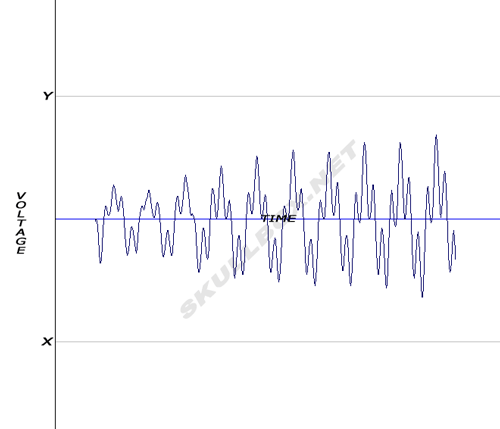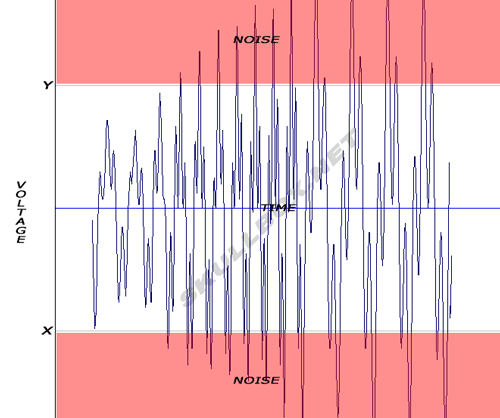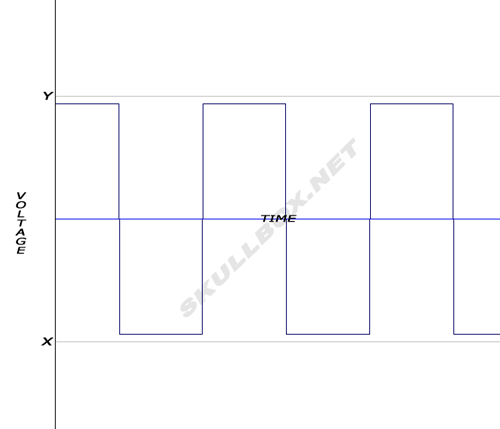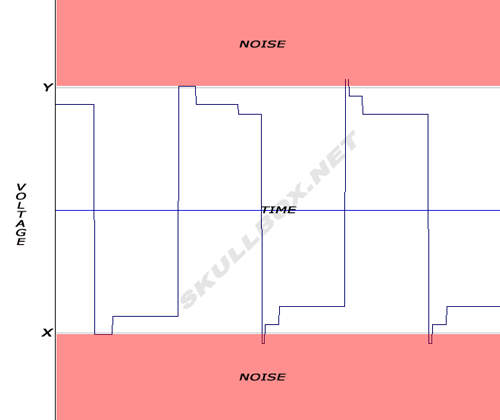
|

|

|

|

|

|

|

|

|

|

|

|

|

|

|

|

|

|

|

|

|

|

|

|

|

|

|

|

|

|
 |
|
|
|
|
Mailing List
|
|
By Joining the mailing list you will be notified of site updates.
|
|
Show Your Support For
This Site By Donating:
|
|
|
|
|


|
|
|
|
|
|

This article describes the difference between digital and analog signals. Shown below are examples of different "waves" and how they work.
Today, nearly all electronic devices we use are digital. The main reason for the change from analog to digital is because digital signals are easier to transmit and are also more reliable. This is illustrated by the images below. However, there are several things you must know about each signal first.
What is a Signal?
Plain and simple, a signal is the transmission of data. We deal with signals constantly during the span of our lives. We interact with signals from music, power lines, telephones, and cellular devices. This means the use of antennas, satellites, and of course wires. In "computer land" signals are very important. Anyone that uses a computer should know how the machine transforms data into signals that other computers and devices can understand. In many cases, knowing how signals work will help you solve some kind of technical problem over the span of your life.
Analog Waveforms
Analog signals were first used in the 1800's. They were used in conjunction with copper telephone lines to transmit conversations. This involved using 2 conductors for each line (send and receive). As technology progressed an increasing number of people started using the telephone making analog signals too expensive and troublesome to maintain. This was due to the way the analog signals work. See the images below:

Notice the gray lines above minimum value X and below maximum value Y. These lines represent the maximum voltage capacity for the signal to travel clearly.

Now notice that the signal has picked up "noise." Noise is simply an unwanted electrical or electromagnetic energy that degrades the quality of a signal. The signal level crosses over the X and Y limits and has now become degraded and hard for the device on the receiving end to interpret. Noise is sometimes called "distortion" or "clipping."
So What? Why Does That Matter?
The answer is simple. As signals travel across a wire, certain factors will add more "noise" to the singal. These factors can include: air conditioning units, fluorescent lights, magnetic fields, etc. There are methods of separating or "filtering" noise from analog signals. However, most of these methods are not accurate, or are devices that transform the signals from analog to digital and back to analog. For these reasons, the use of digital signaling is used to provide a better delivery method.
Digital Waveforms
The physics of digital signals are different than analog signals because they are discrete waveforms. Between the minimum X and the maximum Y, there is a limit on how high the voltage will increase or decrease. See the images below:

Notice that the signal takes 2 basic forms: on (with a value of 1) and off (with a value or 0). Obviously digital signals are more complicated that this, but being an article on the basics of signals, you get the general idea. Notice that the signal is very uniform in composition.

Here, we see the main advantage of digital over analog. Since the signal is very uniform, noise has not severely altered its shape or amplitude. The digital signal shows a far less change to the actual waveform than the previous analog signal. They are both shown below for a close comparison.


Use of Digital Signals with Computers
Computers use digital signals to send and receive data. Although digital signals can only be in the state 1 (on) and 0 (off), complicated combinations of these two values are used to send/receive data. Think of this example:
Using only binary (values 1 and 0), we can create a string of values that is interpreted by a computer to be something more meaningful. For instance, the value 11000110 00110101 10010011 00101101 is interpreted to equal 198.53.147.45 in decimal format. In conclusion, the strength of using a digital system over analog is clear. Digital signals are easier to transmit and offer less room for errors to occur. This leads to accurate data transmission that in turn leads to faster transmission rates and better productivity.
Contact Us
NOTE: this form DOES NOT e-mail this article, it sends feedback to the author.
|
|
|
|
|
|
